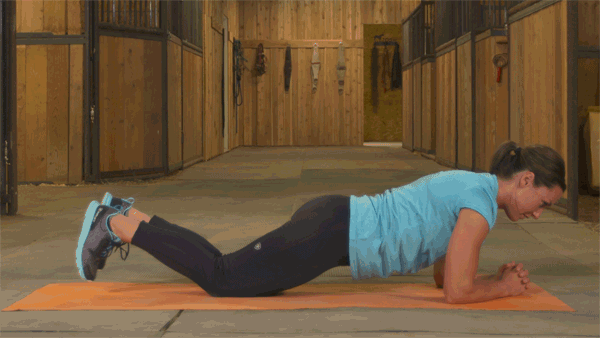When you teach any maneuver to your horse, you practice to the right and to the left. The hope is to achieve balance in each skill be it a rollback, spin, flexibility at the poll, ground cue, and you even emphasize willing forward and backward movement. You do this for consistency, and to ensure that your horse doesn’t get hurt.
As you condition yourself for riding, you should be mindful of your own body’s balance as well. This helps you avoid long- or short-term injuries as well as creates balance in your horse. When you can cue consistently on either side of your horse’s body because you have equal strength or flexibility in your legs, for example, you avoid imbalanced reactions in your horse. This keeps your inability to position yourself properly from affecting your horse’s training, which means fewer inconsistent spins or lead departures.
Single-Side Exercises
When you exercise, choose movements that require you to work each side of your body separately. Exercises that move both sides of your body simultaneously, such as barbell bench press, pushups, or air squats, help you become more fit, but may also lead to imbalances as your strong side will always overcompensate for your weak side. Vary your routine to force each side of your body to do the work, and develop evenly.

Dumbbell movements isolate either side of your body so you get the same amount of stimulation in each muscle group. Chest flys and bench press, shoulder press, deltoid flys, biceps curls, and triceps extensions are all exercises that can be done with dumbbells as opposed to a barbell. Similarly, lunge varieties, single-leg jumps or squats, calf raises, and isolated hamstring curls and quadriceps extensions allow you to work each side of your lower body separately.
Front-to-Back Balance
Your exercise routine should also focus on front-to-back balance and not just right-to-left side balance. Core work in particular should incorporate back and abdominal exercises, and not just one or the other. For riders, a strong core allows you to ride with better cadence, and a strong back will help you avoid injuries, such as sore lower back or a slipped disc from throwing a saddle.

Many people prioritize the front of the core, or abs, only because these muscles are visually appealing. But, don’t forget to do back-specific exercises such as superman holds, back extensions, and planks.
To help develop a well-balanced body, with guidance from an expert, explore Saddle Strong. This program is designed with the equestrian in mind to help you ride your best every ride!






